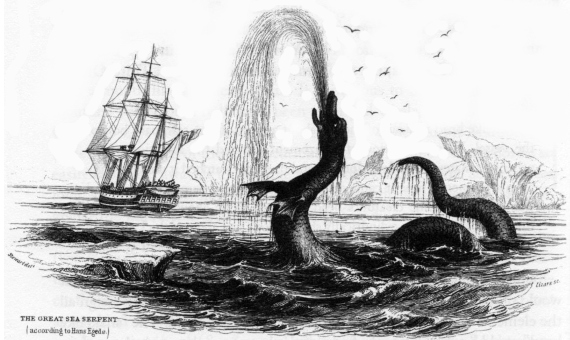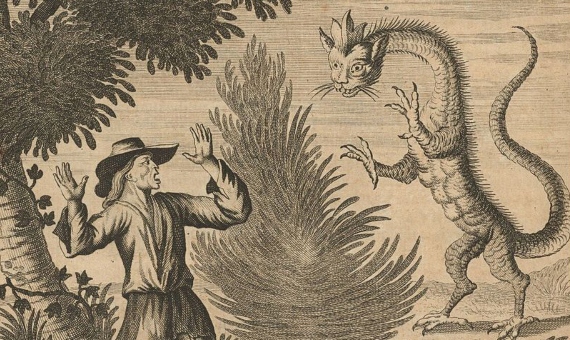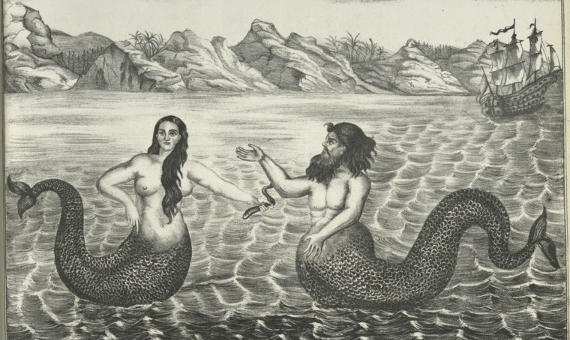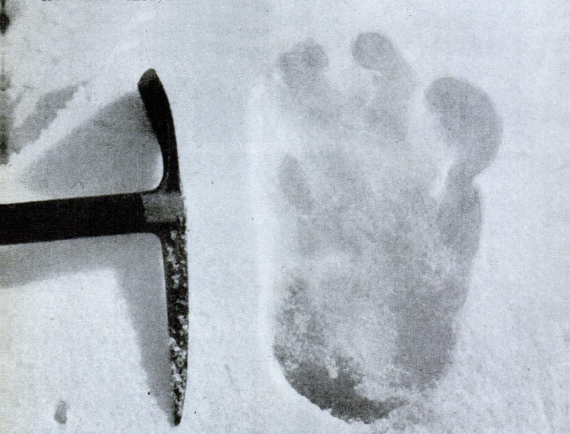Since antiquity and during the Middle Ages, anyone opening one of the then popular bestiaries (illustrated volumes that described various animals) could find within the covers a mixture of reality and fiction. Sharing the pages with real animals were fantastical creatures that have never existed, but were passed along from one volume to the next because someone once said they had seen them. Although many of those monsters were definitively discarded with the advance of zoology, legends about others have endured almost to this day.
And yet, many of the monsters were not one hundred percent fantasy, but rather these cryptids —supposed animals, clearly non-existent— were born when human reasoning combined a rudimentary knowledge of nature with a strong dose of imagination. We review below some classic cases and the science surrounding them.
From sea snakes to the Loch Ness monster
It is not surprising that ancient voyages through unknown and hostile oceans gave rise to all sorts of myths about sea beasts. Many of the stories referred to by the navigators spoke of monsters in the form of serpents, and in fact their tales were not so far-fetched since there is no lack of sea creatures with this appearance: from actual sea snakes to the tentacled arms of the giant squid to other more aberrant organisms like the pyrosome, a species of very long luminous sock composed of thousands of individuals.

However, in the 19th century a curious change in trend began to take place. As science fiction author Lyon Sprague de Camp wrote in 1968, “after Mesozoic reptiles became well-known, reports of sea serpents, which until then had tended towards the serpentine, began to describe the monster as more and more resembling a Mesozoic marine reptile like a plesiosaur or a mosasaur.” The writer suggested that it was the discovery of the fossils of these animals and their dissemination that were turning the snakes into beings with a fusiform body, fins and elongated neck, whose most famous representative is undoubtedly Nessie, the Loch Ness monster.
Recently, British researchers Charles Paxton and Darren Naish decided to rigorously scrutinise the Sprague de Camp hypothesis; in other words, to determine whether, in fact, the alleged sea monsters decided to change shape in order to adapt to the scientific canons of the time. Paxton and Naish gathered a multitude of old reports on sea serpents and analysed their evolution over time. According to their study, published in Earth Sciences History, “over the last 200 years, there is indeed evidence of a decline in serpentiform sea serpent reports and an increase in the proportion of reports with necks.” Although, curiously, it seems that the image of the plesiosaur has been much more seductive: “There is no evidence for an increase in the proportion of mosasaur-like reports.”
Dragons, fear of snakes and fossil mythology
It is curious how such diverse cultures throughout the world have sometimes converged toward common patterns when it comes to shaping monsters. An example is that of the dragon, which has been present with a variety of forms in most cultures, from east to west and from south to north. University of Central Florida anthropologist David E. Jones published in 2000 a book entitled An Instinct for Dragons, in which he hypothesised that the imagery of the dragon is born from the atavistic fear of humans to snakes (as well as raptors and leopards). According to data cited by Jones, the panic these legless reptiles inspire in humans is not explained by cultural differences, and is widespread even in those regions where these animals are rare.

As several authors have suggested, the mythology of dragons has probably also been fuelled since ancient times by the discovery of dinosaur fossils and other extinct animals whose origin could not be determined. For a long time, traditional Chinese Medicine has used the so-called dragon bone or Long Gu, actually fossilized bones of extinct mammals to which popular belief attributes healing properties.
But although we associate them with ancient China or the European Middle Ages, dragons have survived in the West until more recent times. Between 1702 and 1704, Swiss physician and scientist Johann Jakob Scheuchzer undertook extensive trips through the Alps in order to document their natural history. Gathering the narratives of the locals, Scheuchzer included splendid illustrations on the types of dragons that populated the alpine region in his work Alpine Itinera tria, sponsored by the Royal Society by none other than Sir Isaac Newton.
Mermaids and mermen, our aquatic cousins
Another pattern that is repeated in different cultures is that of the mermaid and merman, those half-human half-fish cousins of ours. The Greek Poseidon and the Roman Neptune have their antecedents in the Babylonian god Ea, whose 4,000 years of antiquity attest to the long journey of the myth of our aquatic cousins. Through the story of The Odyssey and the very lax filter of Pliny the Elder’s Natural History, mermaids (or sirens) were forever etched in the popular imagination, possibly aided by sightings of manatees and dugongs.

A curious twist on the myth of marine humans emerged in 1960, when British biologist Alister Hardy published his hypothesis of Homo aquaticus. According to this idea, some ancestors of humans would have led a more aquatic than terrestrial life, which for Hardy explained certain peculiar features such as our lack of hair, our bipedalism or having subcutaneous fat similar to that of certain marine mammals. The aquatic ape hypothesis survives today among a small circle of supporters, but is considered by the majority of the paleoanthropological community as unlikely or even as pseudoscience.
Yeti and Bigfoot, our lost brothers
Equally understandable is that folklore in different regions of the world has described another common pattern: anthropomorphic beings that represent our wildest side, concealed in deep forests or perpetual snows. Yeti and Bigfoot take the prize for popularity, but they are so widespread throughout the world that there is virtually no culture that has not originated its own versions.

The myth of the primitive beast with a human appearance has also had some good interactions with formal science. In 2014, controversial Oxford University geneticist Bryan Sykes published the result of a DNA analysis performed on hair samples supposedly attributed to the Yeti, concluding that it was a hybrid animal between a brown bear and a Palaeolithic polar bear that lived in the Arctic. However, subsequent studies have ruled out Sykes’ conclusions, attributing the analysed DNA to normal specimens of the Himalayan brown bear.
Even more bizarre was the case of Texas coroner Melba Ketchum, who in 2012 announced that he had sequenced the genome of Bigfoot (or Sasquatch), which according to him turned out to be a primate that emerged 15,000 years ago from the cross between Homo sapiens and another unknown relative. The study, self-published by the author, was completely rejected by the scientific community, which did not find in its DNA sequences anything but an unspeakable hodgepodge of contamination.
Comments on this publication